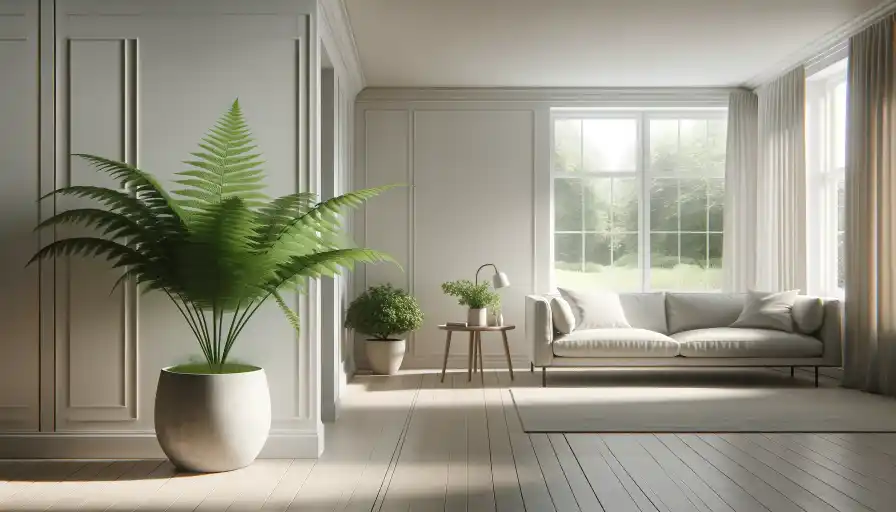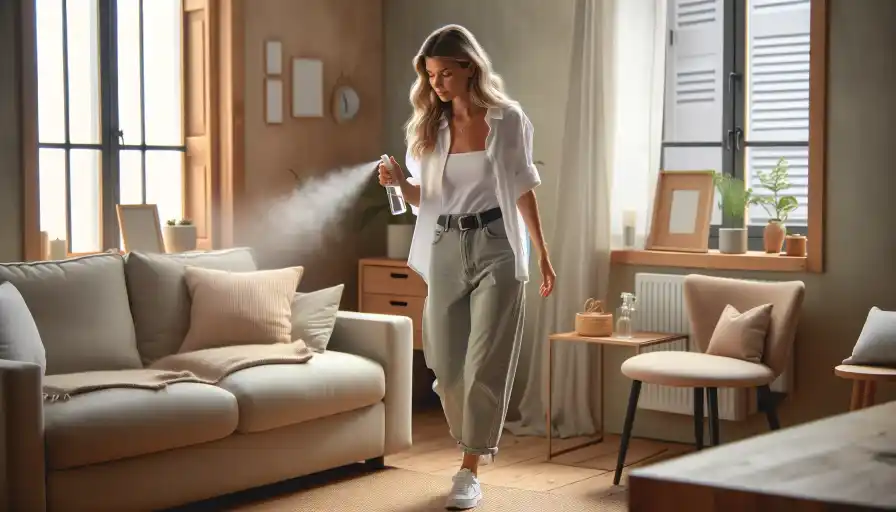6 Ways To Add Moisture to the Air Without a Humidifier
Humidity, or water vapor in the air, impacts comfort and health, with low levels causing dry skin, respiratory issues, and static electricity. In this blog post we explores natural, simple methods to increase room humidity without an electric humidifier, which can be costly and high-maintenance.
Learn about using bowls of water, indoor plants, boiling water, showers, spray bottles, and wet clothes to combat dryness, enhance air quality, and create a cozy atmosphere, along with their advantages and drawbacks.
Method 1: Use a Bowl of Water
A bowl of water can humidify a room by evaporating water into the air.

The evaporation rate depends on the bowl’s size, shape, and material, as well as the room’s temperature and airflow. To increase the efficiency of a bowl of water, you should:
- Use a ceramic, glass, or metal bowl, as they conduct heat and have smooth surfaces
- Place the bowl near a heat source, such as a radiator, a fireplace, or a candle, to accelerate evaporation and create warm mist
- Place the bowl on a windowsill, where it can receive sunlight and natural ventilation, to boost evaporation and disperse moisture
- Use a fan to blow air over the water surface, creating turbulence and carrying away water vapor, to improve air circulation and evaporation
Using a bowl of water is a simple and cheap way to humidify a room. However, it may not be very effective or efficient, as it can only increase the humidity by a small amount. It may also pose some risks, such as spilling, leaking, or attracting insects.
Read: How effective is a bowl of water compared to a humidifier?
Method 2: Use Plants
Plants can humidify a room by releasing water vapor through their leaves.

This process is called transpiration, and it depends on the plant’s type, size, and health, as well as the room’s light, temperature, and humidity. To increase the efficiency of plants, you should:
- Choose plants that have high transpiration rates, such as ferns, palms, orchids, and peace lilies
- Place the plants in bright and sunny spots, where they can photosynthesize and transpire more
- Water the plants regularly and keep the soil moist, but not soggy, to avoid root rot and fungal growth
- Mist the plants occasionally with a spray bottle, to increase the humidity around the leaves and prevent them from drying out
Using plants is a natural and beautiful way to humidify a room. They can also provide oxygen, filter toxins, and improve your mood. However, they may also require some care and maintenance, such as pruning, fertilizing, and repotting. They may also attract pests, such as aphids, spider mites, and mealybugs.
Method 3: Use a Stove or a Kettle
A stove or a kettle can humidify a room by boiling water and creating steam.

The steam can increase the humidity level and the temperature, making it more comfortable in cold weather. To use a stove or a kettle, you should:
- Fill a pot or a kettle with water and place it on the stove over medium-high heat
- Wait for the water to boil and produce steam, which may take 5-10 minutes depending on the amount of water and the heat level
- Add some herbs or spices to the water for a nice scent and some health benefits, such as mint, ginger, or cinnamon
- Set a timer to remind you to turn off the stove or the kettle when the water is almost gone, to avoid burning or damaging it
- Ventilate the room by opening a window or a door slightly, to prevent condensation and mold growth
Using a stove or a kettle is a fast and easy way to humidify a room. It can also provide warmth, aroma, and soothing effects. However, it may also consume a lot of energy, make noise, and pose a fire hazard.
Method 4: Use a Shower or a Bath
A shower or a bath can humidify a room by producing steam from hot water.

The steam can increase the humidity level and the temperature, making it more comfortable in cold weather. To use a shower or a bath, you should:
- Take a shower or a bath in lukewarm (not hot) water for 10 to 15 minutes
- Leave the bathroom door open during or after the shower or bath, to let the steam escape into the adjacent rooms
- Add some essential oils to the water for a pleasant aroma and some therapeutic effects, such as lavender, eucalyptus, or peppermint
- Avoid scrubbing your skin with a washcloth or loofah, as this can irritate your skin and cause inflammation
Using a shower or a bath is a relaxing and hygienic way to humidify a room. It can also help you soothe your skin and respiratory system, especially if you have eczema or asthma. However, it may also consume a lot of water, make noise, and pose a slipping hazard.
Method 5: Use a Spray Bottle
A spray bottle can humidify a room by misting the air with water droplets.

The mist can increase the humidity level and cool down the room temperature, making it more comfortable in hot weather. To use a spray bottle, you should:
- Fill a spray bottle with water, preferably distilled water to prevent mineral buildup and bacterial growth
- Spray the water in the air at a distance of about 30 cm (12 in) from your face, avoiding direct contact with your eyes, nose, and mouth
- Add some essential oils to the water for a pleasant aroma and some therapeutic effects, such as lavender, eucalyptus, or peppermint
- Repeat the spraying as often as needed, depending on the room size and humidity level
Using a spray bottle is a portable and convenient way to humidify a room. You can also control the amount and direction of the spray. However, it may also require frequent refilling, spraying, and cleaning. It may also not be very effective or efficient, as it can only increase the humidity by a small amount.
Method 6: Hang Wet Clothes
Hanging wet clothes can humidify a room by evaporating water from the fabric and adding moisture to the air. This can also help you dry your laundry faster and save energy.

To hang wet clothes, you should:
- Choose a suitable location, such as a clothing rack, a door, or a window, where there is enough space and airflow
- Space out the clothes evenly, so that they don’t overlap or touch each other, to allow faster and more even drying
- Flip the clothes over halfway through the drying process, to ensure that both sides are dry and prevent wrinkles
- Check the clothes for dampness before taking them down, to avoid mold and mildew growth
Hanging wet clothes is a practical and eco-friendly way to humidify a room. However, it may also cause some problems, such as dripping water, shrinking fabric, and fading color.
What Next?
These methods are natural, simple, and cheap. They can help you improve your comfort and health, as well as create a cozy and inviting atmosphere. Try them out and let us know what you think. Thank you for reading and following our blog.
